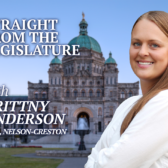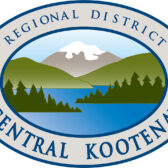Alberta finances comes up short when compared to other energy-rich jurisdictions in North America
By The Fraser Institute
Despite a wealth of natural resources and booming economy, the Alberta government’s finances fall short when compared to other energy-rich North American jurisdictions, finds a new study released today by the Fraser Institute, an independent, non-partisan Canadian public policy think-tank.
The study, An Economic and Fiscal Comparison of Alberta and Other North American Energy-Producing Provinces and States, compares Alberta to Saskatchewan, Newfoundland and Labrador, Alaska, Wyoming, Louisiana, Oklahoma, Texas, North Dakota and Colorado.
“Considering the strength of the Alberta economy, most Albertans likely assume that the province’s finances are in order, but when compared to other energy-producing provinces and states, Alberta loses its lustre,” said Livio Di Matteo, study co-author, Fraser Institute senior fellow and economics professor at Lakehead University.
For example, post-recession, Alberta has struggled to balance its books, despite a strong economy. Of the 10 energy-producing jurisdictions analyzed in the study, Alberta was one of only three to incur a deficit (spending exceeded revenues) in 2011-12, the most recent year of comparable data. Meanwhile, both of Canada’s other energy-producing provinces, Saskatchewan and Newfoundland and Labrador, enjoyed surpluses in 2011-12.
Moreover, Alberta’s deficit in 2012-13 ballooned from 0.1 per cent of provincial spending to almost seven per cent.
Consequently, continuous deficit spending has drained the province’s rainy day funds. Alberta’s net assets (total assets minus total liabilities) plummeted from $31.5 billion in 2007-08 to $12.1 billion in 2012-13—a loss of $19.4 billion in just five years. During that same period, Saskatchewan and Newfoundland and Labrador were able to reduce their debt by $2.2 billion and $1.6 billion, respectively.
And the problem isn’t a lack of revenue. Alberta’s spending on programs increased by $22.1 billion—more than needed to account for inflation and population growth since 2005-06. Had the government simply maintained spending rates based on inflation and population growth, Alberta would have enjoyed successive balanced budgets.
“Increased government spending—not a dearth of revenues—has saddled Alberta with budgets deficits at a time when most other energy-producing jurisdictions in North America enjoy surpluses,” Di Matteo said.
Continuous deficits also deny Albertans tax relief and the fruits of tax reform.
When compared to the U.S. states analyzed in the study, Alberta’s tax rates are generally higher and its tax system markedly unique. For example, Alaska, Texas and Wyoming impose no personal income taxes, and Wyoming and Texas also impose no corporate income tax while relying more heavily on consumption taxes such as sales tax.
Finally, the study spotlights a largely ignored weakness in Alberta’s economic performance, which could threaten the province’s future prosperity. Alberta ranked dead last (among the analysed jurisdictions) for productivity growth over the last decade with an average growth rate of 0.4 per cent compared to an average of 1.6 per cent for the other jurisdictions. North Dakota, which ranked first in productivity growth, recorded an amazing average growth rate of 4.1 per cent.
“Alberta’s poor productivity growth should trouble policy-makers since growing productivity is key to increasing incomes and standards of living for Albertans and their families,” Di Matteo said.
“Despite its impressive economy, Alberta cannot rest on its laurels and must ensure its future competitive edge by boosting economic productivity, controlling spending, restoring long-term fiscal balance and reforming its tax system,” Di Matteo said.
The Fraser Institute is an independent Canadian public policy research and educational organization with offices in Vancouver, Calgary, Toronto, and Montreal and ties to a global network of think-tanks in 87 countries. Its mission is to measure, study, and communicate the impact of competitive markets and government intervention on the welfare of individuals. To protect the Institute’s independence, it does not accept grants from governments or contracts for research.

























